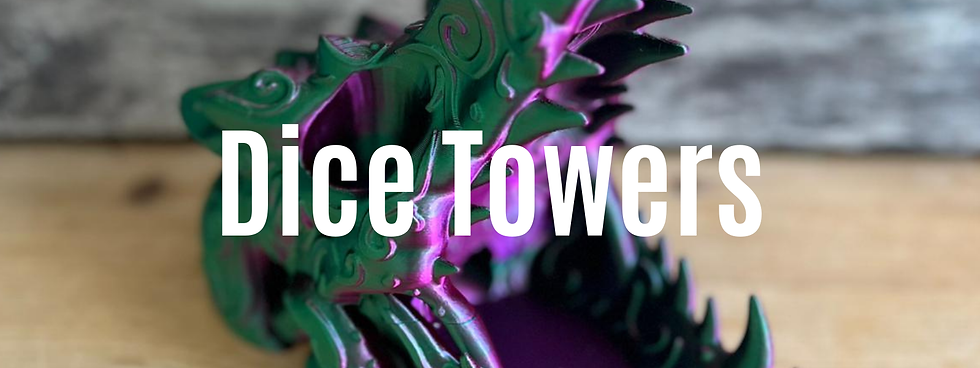3D Printing the Ruins of Talhundereth for D&D
- Jack Davison
- Sep 1
- 2 min read
For our latest in-person Dungeons & Dragons session, I decided to go all in and build a full custom dungeon setup: The Ruins of Talhundereth. Using 3D printed dungeon blocks and miniatures from Arbiture Miniatures and Superprints, I created a modular dungeon that brought the game to life in a way that flat maps just can’t match.
The entire process, from the first print to final setup, took three weeks. Here’s how it came together.

Week 1: Printing the Foundations
The first step was printing hundreds of dungeon tiles. I used modular dungeon blocks, which gave me flexibility to design and rearrange the layout. Straight walls, corners, stairs, and floor tiles made up the backbone of the build.
At this stage everything was grey plastic, but the important part was making sure I had enough pieces to cover the size of dungeon I wanted. This meant running the printers almost non-stop for days.

Week 2: Painting and Detailing
Once the printing backlog was finished, I moved on to painting.
Basecoat: Greys, blacks, and dark browns for the stonework.
Drybrushing: Lighter greys to bring out the textures.
Details: Wooden doors, treasure piles, fungi, and rubble all got their own pops of colour.
This was also when I started experimenting with larger dungeon features—pillars, collapsed walls, and raised platforms. Painting took the longest time, but it transformed the blocks from raw prints into something immersive.
Week 3: Miniatures and Setup
The last week was all about characters and enemies. I painted the miniatures from Abiture Miniatures using Army Painter Speedpaints, which made the process faster while still giving great detail. The Superprints minis didn’t need any work—they came printed in full colour and were ready to hit the table straight away. Between the two, I had a good mix of hand-painted adventurers, skeletons, and quirky monsters like a grinning slime.
Once the minis were ready, I set up the full dungeon layout under a gazebo with proper lighting and shelving for props. By the time players sat down, they weren’t just looking at a map—they were walking through the Ruins of Talhundereth.
The Final Result
The finished dungeon included:
Multi-level rooms and staircases.
Trapped corridors and treasure hoards.
Fungi-filled caverns and ruined halls.
Miniatures that matched the story beats perfectly.
Playing with this setup turned a standard D&D session into a fully immersive experience. The modular dungeon blocks let me reconfigure encounters, while the painted minis gave everyone a clear visual of the action.

Reflection
Looking back, building the Ruins of Talhundereth was a huge project, but seeing it all come together at the table made it more than worth it. Three weeks of printing, painting, and setup paid off the moment we started playing—the dungeon came alive, and the game itself was a blast. Everyone around the table got pulled into the story in a way that flat maps just can’t capture, and we all had a great time exploring the ruins together.
If you’d like to build your own version, everything I used in this project is available through our site:
Bringing 3D printing into your tabletop games can take some work, but the end result is an experience you and your players will remember.


















Comments